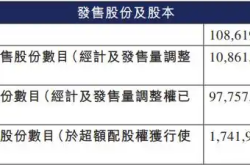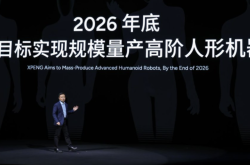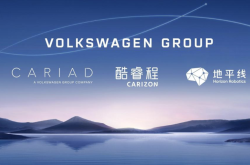China is Reshaping the Global Automotive Technology Innovation Landscape
![]() 06/23 2025
06/23 2025
![]() 528
528
Currently, China stands at the forefront of global advancements in new energy and intelligent connected vehicles. Its related industry supply chain offers an optimal cost-performance ratio, and the country boasts a vast pool of innovative talent. It is widely anticipated that China will emerge as a significant hub on the global automotive innovation map in the foreseeable future.
As the automotive industry undergoes a revolutionary shift towards electrification, intelligence, and connectivity, multinational automakers are accelerating their presence in China by establishing R&D centers. When multinational executives' mantra shifts from 'in China, for China' to 'in China, for the world,' and Chinese automotive technology and design become the benchmark for imitation and research by other global brands, China is quietly reshaping the global automotive technology innovation landscape.
"In fact, these changes began two years ago," said Xu Haidong, Executive Deputy Secretary-General of the China Association of Automobile Manufacturers, in an interview with
From Introduction and Absorption to Nurturing the Global Market
On March 25, 1997, the contracts and articles of association for the Sino-US joint venture Shanghai General Motors Co., Ltd. and Pan Asia Technical Automotive Center Co., Ltd. were signed in the Great Hall of the People in Beijing. Media reports at the time stated: "General Motors Corporation will transfer the Buick 97 new product and its next-generation products, along with the complete set of manufacturing and development technologies for these products, including mold, interior, chassis, and powertrain, to Shanghai General Motors Co., Ltd. and Pan Asia Technical Automotive Center."
In April 2025, Porsche announced that its China R&D Center had completed a strategic structural upgrade, deeply integrating Porsche R&D China Branch, Porsche Digital China, and Porsche Engineering China, while also incorporating local procurement and quality assurance functions. The center will focus on developing infotainment systems and driver assistance solutions for the Chinese market, with the first localized infotainment solution set to be launched in 2026.
Multinational automakers have continuously expanded their R&D layouts in China, with a renewed wave of enthusiasm in the past two years. In May 2024, Volkswagen (China) Technology Co., Ltd., the Volkswagen Group's largest R&D center outside Germany, held a groundbreaking ceremony for three projects and the opening ceremony of its urban test track. Besides Volkswagen (China) Technology Co., Ltd., the Volkswagen Group has recently established a new intelligent connected electric vehicle center in Hefei, covering the entire value chain from R&D to production, sales, and service. In August 2024, the Hyundai Motor Group officially invested to establish Hyundai Advanced Automotive Technology Development (Shanghai) Co., Ltd., upgrading the original branch to an independent legal entity.
The Hyundai Motor China Advanced Technology R&D Center is the world's first overseas advanced digital intelligent R&D center built by the Hyundai Motor Group, focusing on autonomous driving, intelligent cabins, shared mobility, connectivity technology, and electrification. It aims to establish a forward-looking R&D system centered on China's local market, thereby rapidly realizing the digital transformation of the Hyundai Motor Group in China and the global market. Simultaneously, some multinational companies have upgraded and transformed their existing R&D centers. In April 2024, the new building of the Mercedes-Benz Shanghai R&D Center was inaugurated. The plan outlines a focus on cutting-edge fields such as intelligent connectivity, autonomous driving, and software, with deep involvement in the development of the MB.OS architecture and leading the development of intelligent cabins and autonomous driving functions.
However, the establishment of R&D centers today differs from the past. In earlier years, these technology innovation centers established by multinational companies were primarily about bringing products closer to the Chinese consumer market, focusing more on appearance design, while core key technologies were still 'introduced' from abroad. Today, however, in addition to tailoring more suitable products for Chinese consumers, absorbing China's currently leading new energy and intelligent connected technologies and talent, and laying the foundation for the next global technological revolution, have become more crucial.
Ola Källenius, Chairman of the Board of Management of Daimler AG, previously stated: "China is the most important market for Mercedes-Benz and also a fertile ground for our technological innovation." It is understood that the large-scale R&D centers of Mercedes-Benz in Beijing and Shanghai have formed a 'dual innovation engine' in China, with the Chinese R&D team playing a leading role in an increasing number of global R&D projects.
"In the past, some product designs by Bosch China for the local market needed approval from the headquarters before implementation. Now, Bosch China has more decision-making power and has improved its decision-making speed, allowing for a quicker response to the needs of Chinese customers," Xu Daquan, President of Bosch China, pointed out in an interview with the media. By enhancing its R&D capabilities and product supply chain resilience in China, Bosch will gradually export domestically developed products and technologies in certain fields to support its business in other regions, gradually nurturing the international market.
"China's electrification and intelligent technology are leading the transformation and development of the global automotive industry," said Mak Chi-yan, Chairman of Nissan China Management Committee and President of Dongfeng Motor Co., Ltd. Nissan is fully leveraging the leading technology and resource advantages of the Chinese market to jointly develop innovative and competitive products.
Changes in the Chinese Market and the Rise of the Industry
"For global automakers, China has transformed from a 'potential market' to the 'largest and most profitable market,' then to the 'most competitive factory,' gradually becoming a 'training ground and gym,' and now, it has become a 'brain (the core of R&D).' This year's Shanghai Auto Show further validated our previous judgments," said Gong Min, Head of China Automotive Industry Research at UBS, in an interview with the media during the Shanghai Auto Show. From the transition to new energy to the transition to intelligence, China has become the center of global automotive industry R&D and innovation, which is inseparable from the openness of the Chinese market, industrial competitiveness, and full market competition. However, different multinational automakers have differentiated attitudes towards investing in and embracing R&D in China. In the long run, this will lead to differentiation in their product competitiveness, R&D capabilities, and overall competitiveness.
In Xu Haidong's view, multinational companies have been increasing their technological layout in China over the past two years for three core reasons. First, China currently leads the world in the field of new energy and intelligent connected vehicles. According to statistics from the China Association of Automobile Manufacturers, in 2024, domestic sales of new energy vehicles exceeded 13 million, and the proportion of models equipped with L2 autonomous driving technology also exceeded half. Facing such a huge market, multinational automakers must come to China if they want to develop new energy and intelligent connected vehicle technologies. Second, on a global scale, whether it is new energy vehicles or intelligent connected vehicles, China's related supply chain is more mature and complete, offering a higher cost-performance ratio, including the three-electric system, radars, cameras, etc. Third, a significant number of innovative talents in new energy and intelligent connected vehicles are gathered here. In addition to the aforementioned key components, China even boasts a large number of chip design talents. These reasons have prompted multinational companies to actively establish R&D centers in China to seize the opportunities of the times.
On the other hand, Xu Haidong believes that the intensified layout of R&D and design innovation business in China by multinational companies is also closely related to the rise of China's automotive industry. After more than 40 years of learning and development, through joint ventures and cooperation, Chinese automakers have already possessed the ability to develop and design products in a positive direction, from testing and verification to integrating the supply chain, to quality assurance, as well as 4S stores and direct sales marketing models. Chinese automakers have mastered the corresponding technologies and capabilities, with faster processes and stronger adaptability. In contrast, the Chinese consumer market has undergone tremendous changes in recent years. Some post-80s and post-90s generations prefer novelty and change and are willing to accept new energy and intelligent assisted driving technologies. With the combination of these two factors, Chinese automakers have finally made breakthroughs, and their market performance has soared rapidly.
Xu Haidong pointed out that after feeling the pressure brought about by the rapid rise of China's local automotive industry, multinational companies have realized that to maintain market share and gain a firm foothold in China, the largest automotive market, they must accelerate local development. The construction of R&D centers is one of the crucial measures.
"To create products that truly meet the needs of Chinese consumers, it is necessary to use 'Chinese minds and methods' and focus on Chinese thinking for product development," said Li Hui, General Manager of Toyota Motor (China) Investment Co., Ltd. To achieve the transformation from 'adapting to China' to 'defined by China,' Toyota has integrated its four R&D centers in China, transferring R&D decision-making power from its Japanese headquarters to China, and also established a 'Chief Chinese Engineer System' with Chinese nationals serving as vehicle development leaders.
Joint Ventures and Cooperation Enter the 2.0 Era
However, Xu Haidong frankly stated that establishing R&D centers in China and adapting to new trends in the Chinese automotive consumer market through strengthened localized R&D is not something that can be achieved overnight. Therefore, multinational companies have simultaneously chosen to strengthen joint ventures and cooperation with Chinese automakers. Unlike previous joint ventures and cooperation between the two parties, this time, it is more about Chinese automakers sharing their experience and insights in the field of new energy and intelligent connected vehicle technologies with multinational companies. Therefore, it is also known as the '2.0 era' of China's automotive joint ventures and cooperation.
This trend was even more evident at this year's Shanghai Auto Show. After reaching a strategic cooperation with Alibaba on the AI large language model and launching the 'car expert' and 'travel companion' intelligent entities led by BMW's local R&D team, BMW once again deepened its local AI ecosystem layout and announced the integration of DeepSeek. Bosch and Horizon Robotics signed a strategic cooperation memorandum, where Bosch will develop a new generation of multi-function camera platforms based on Horizon Robotics' Journey 6B chip, and also adopt the Journey 6E/M to create an upgraded assisted driving system. Multiple Chinese automakers have adopted this solution. The pure electric CLA launched by Mercedes-Benz at the auto show is the first to be equipped with the MB.OS operating system developed by Mercedes-Benz. This system applies the speech recognition capabilities of local Chinese suppliers and the Doubao AI large model from ByteDance, enabling a smoother and richer Chinese user experience. The globally premiered Audi A5L Sportback at the auto show has become the first fuel vehicle equipped with Huawei's Kunlun intelligent assisted driving technology, achieving an assisted driving experience comparable to that of electric vehicles.
As one of the important measures to respond to challenges, in recent years, Bosch has also taken a positive and open attitude and introduced third-party local suppliers. For example, Bosch and WeRide have jointly developed the 'Bosch China Advanced Intelligent Assisted Driving Solution,' which has been equipped on the Chery Starway ES and ET mass production vehicles. Xu Daquan proposed: "The cooperation with local suppliers allows the project to be implemented at the fastest speed. We integrate Bosch's advantages in domain controller hardware design, basic software, middleware, application layer, and cloud service software development with WeRide's advantages in software algorithms in the field of advanced intelligent assisted driving. From customer targeting to project mass production, it only took 18 months."
However, it is undeniable that for a deeply established automotive supply chain giant, partnering with industry 'newcomers' is quite challenging. Xu Daquan revealed in an interview with the media that the cooperation with WeRide began in 2022. At that time, Bosch China had extensive communication with the headquarters and finally persuaded the headquarters to start some new attempts.
In embarking on the new era of joint ventures and cooperation 2.0, it is evident that multinational corporations must adapt their mindset, position themselves appropriately, and grant the Chinese partners a more equitable status in collaborations. Simultaneously, Chinese automakers need to foster confidence, judiciously safeguard their rights and interests throughout the cooperation, and adopt an open and innovative approach to ensure global consumers benefit from China's latest technological advancements.
Upon entering this "uncharted territory," we must advance with unwavering resolve.
As Xu Haidong aptly noted: "Global automotive R&D centers are converging in China, positioning us as a significant design hub and innovation epicenter on the global automotive map. This shift will propel China to establish a competitive edge in international competition, particularly in new energy and intelligent connectivity, thereby attracting a plethora of global R&D and innovative talents." So, what strategic steps should Chinese automakers, now leaders in R&D and innovation, undertake as they venture into the uncharted waters of automotive technological innovation?
Xu Haidong offered four key suggestions. Firstly, Chinese automakers must persistently escalate innovation efforts and R&D investments. Navigating uncharted territory necessitates venturing into unprecedented directions with no established benchmarks or guidelines. Therefore, Chinese enterprises must be prepared to absorb substantial sunk costs while strengthening intellectual property protection. Strengthening the safeguard of R&D achievements will incentivize more enterprises to boldly explore and innovate.
Secondly, despite the inherent risks and potential failures in technological innovation, Xu Haidong stressed the paramount importance of prioritizing consumer safety and rights. This aligns with the automotive industry's need for long-term, sustainable growth. Safety, as a fundamental principle, remains immutable.
Thirdly, Xu Haidong emphasized the significance of product quality and brand building for Chinese automakers. Only exceptional product quality can underpin corporate growth. Coupled with enhanced brand influence and improved service standards, China's automotive industry stands a promising chance of better internationalization and nurturing world-class brands.
Lastly, internationalization remains the definitive path forward. Drawing from the overseas experiences of automakers from the United States, Germany, Japan, and South Korea, Chinese automakers aiming for genuine international development must establish a comprehensive overseas development capability system. From factory production to R&D and manufacturing, and extending to management models, Chinese automakers must first refine and formulate effective processes and operating systems domestically. Subsequently, they should adapt these systems to the conditions of different countries and regions abroad, ultimately evolving into truly world-class automotive enterprises.
Note: This article was originally published in the 'Industry Insights' column of the June 2025 issue of Auto Review magazine. Stay tuned for more insights. 
Image: From the internet
Article: Auto Review
Typesetting: Auto Review








